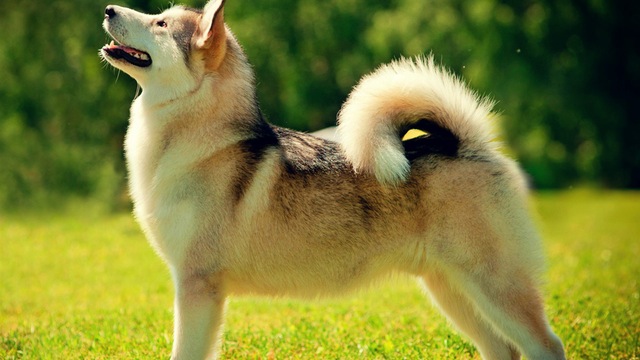No one has even been able to completely explain how our dog friends came to be our friends. It is a special and unique interface that we have. Dogs live with us in our homes and walk with us on the paths of our lives every day. We want to reward them for their friendship, but since we cannot ask them which rewards they like best, we just don’t know exactly how. Dogs seem to like food rewards and they seem to enjoy praise rewards. Wouldn’t it be great to know which they like better? The real answer could shed light on everything from our methods of training to our daily interaction with our best friends.

Previous studies utilized behavior tests and watched dogs’ physical responses, but it is hard to separate whether their choices are based on preferences for the food reward alone or how it is being presented. A new study used actual brain imaging to define dogs’ preferences at the brain level using MRI technology.
In the past, it has been discovered that for mammals, the basis for preference, reward, and anticipation seems to lie in a portion of the brain, called the ventral striatum.1 This area contains numerous oxytocin receptors. 2 Oxytocin has been found to play a role in social bonding in many mammals. 3 Other findings have previously suggested that oxytocin also is important in social bonding for humans and dogs.4,5,6
It is believed that if this region in a dog’s brain becomes activated, it indicates a preference for that dog. In this study, 15 dogs were trained to associate items with certain rewards. The objects were not rewards themselves, as they were a toy car, a toy horse and a hair brush. The items were presented at the end of a stick so that the human presenter was not visible. The car was linked to the entry of the dogs’ primary caregiver who then gave the dog 3 seconds of verbal praise. The toy horse was paired with a high value food reward (in this case a piece of hot dog) and the hair brush was a control item that was linked to no action at all.

The MRI was attached to the dogs to monitor their awake brain activity in the area of the ventral striatum. The findings indicated that this area did appear to correlate well with the dogs’ preferences and that the dogs did exhibit individual preferences. Of the 15 subjects, 4 dogs seemed to prefer a praise reward over food – that’s 30%! Only 2 of the dogs strongly preferred a food reward and the remaining dogs responded to both food and praise.
Although, we dog lovers would love for the findings to indicate that dogs are truly only “in it for the love,” these findings are pretty amazing. They show that there are dogs who actually favor a praise reward over a treat. We know our own dogs. You probably already have a sense of what your own dog likes best, but it can help us to prioritize the social time that we spend with our dogs, knowing that some dogs truly crave it down to a brain level and even more dogs need and want both food rewards and praise. To meet all of your dogs needs, make sure that you are taking the time to provide for physical and emotional needs of your dog.
- Peter F. Cook, Ashley Prichard, Mark Spivak, Gregory S. Berns,Awake Canine fMRI Predicts Dogs’ Preference for Praise Versus Food
Department of Psychology, Emory University, Atlanta, GA 30322
Comprehensive Pet Therapy, - O’Doherty, J., Dayan, P., Schultz, J., Deichmann, R., Friston, K., and Dolan, R. J. (2004). Dissociable roles of ventral and dorsal striatum in instrumental conditioning. Science, 304(5669), 452-454.
- Freund-Mercier, M. J., Stoeckel, M. E., Palacios, J. M., Pazos, A., Reichhart, J. M., Porte, A., and Richard, P. (1987). Pharmacological characteristics and anatomical distribution of [3 H] oxytocin-binding sites in the Wistar rat brain studied by autoradiography. Neuroscience, 20(2), 599-614.
- Rilling, J. K., Gutman, D. A., Zeh, T. R., Pagnoni, G., Berns, G. S., and Kilts, C. D. (2002). A neural basis for social cooperation. Neuron, 35(2), 395-405.
- Young, K. A., Liu, Y., and Wang, Z. (2008). The neurobiology of social attachment: a comparative approach to behavioral, neuroanatomical, and neurochemical studies. Comparative Biochemistry and Physiology Part C Toxicology and Pharmacology, 148(4), 401-410.
- Odendaal, J. S., and Meintjes, R. A. (2003). Neurophysiological correlates of affiliative behaviour between humans and dogs. Veterinary Journal, 165(3), 296-301
- Romero, T., Nagasawa, M., Mogi, K., Hasegawa, T., and Kikusui, T. (2014). Oxytocin promotes social bonding in dogs. Proceedings of the National Academy of Sciences USA, 111(25), 9085-9090.
